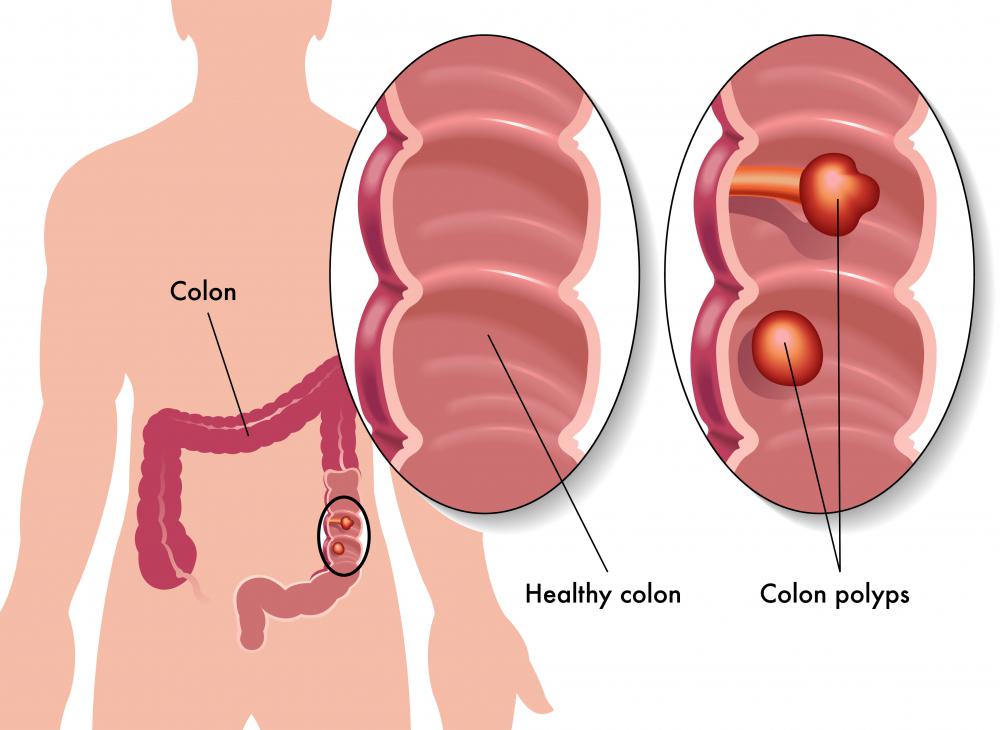At TheHealthBoard, we're committed to delivering accurate, trustworthy information. Our expert-authored content is rigorously fact-checked and sourced from credible authorities. Discover how we uphold the highest standards in providing you with reliable knowledge.
What is a Sessile Polyp?
A sessile polyp is a growth that is relatively flattened, in contrast with a pedunculated polyp, a growth that develops on a protruding stalk. These growths are usually benign in nature, although they can become malignant. When a polyp is identified, it is possible to conduct some diagnostic tests to learn more about it and to determine whether or not it is a cause for concern. These tests can include biopsy to see which kinds of cells are present.
Polyps in general are growths that occur on the mucus membranes of the body. The intestines are a common location, but they can also form in the mouth, esophagus, nose, and vagina, and they may also be found under the eyelids. Some people have a genetic predisposition to develop polyps, while in other cases the growths occur sporadically and without any apparent cause.

It is not uncommon for a sessile polyp to go unnoticed until after someone dies. As long as the growth remains small and benign, it will not be noticeable, especially in the deep recesses of the body. Sometimes, however, the growth can grow large enough to cause bleeding, even if the polyp itself is benign, and one can get big enough to create a blockage. In the case of a malignant growth, people may also develop symptoms of cancer as the growth enlarges and spreads.

Sometimes, a polyp is readily visible, as when it is in a location like the mouth or nose. In this case, taking a sample for biopsy is easy, and the whole growth may simply be removed on the grounds that this spares the patient a second procedure in the event that the growth is malignant. Removal may also be recommended if the polyp is causing symptoms or distress for the patient.

In the case of sessile polyps in locations like the colon, an endoscopic procedure is needed to see and sample the growths. In these procedures, a camera is introduced into the body along with tools that can be used to take biopsy samples or remove the polyp altogether. The camera also offers an opportunity to review the footage later to see if there are additional growths or signs of medical issues. The procedure is usually performed on a sedated or anesthetized patient because it is uncomfortable, and the patient may need to observe some precautions, such as not eating beforehand, in case an adverse reaction to anesthesia is experienced.
AS FEATURED ON:
AS FEATURED ON:















Discussion Comments
What size would a sessile polyp need to be before it starts to invade other tissue?
I could see where a colon polyp would go unnoticed. If you do not get exams or go to the doctor, you could have a colon polyp for years and not know it. After a while it could then become cancerous. People really do need to go the doctor regularly--you could be carrying around something that you don't even know you have.
It seems like the sessile polyp is not a type of malignant polyp, at least not usually. That's a good thing, since it is not easy to locate on the body. However, I would still be worried about any sort of polyp if I had one, and probably want it removed even if it was benign.
Post your comments